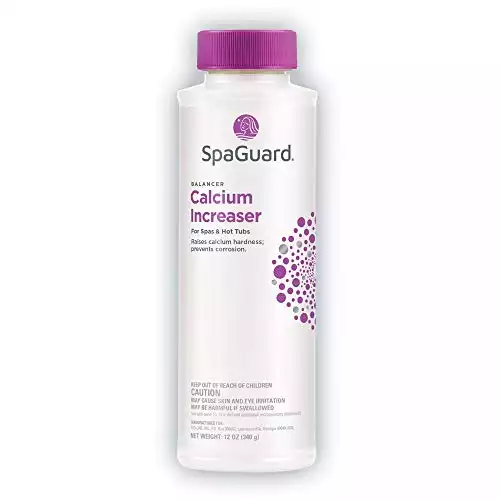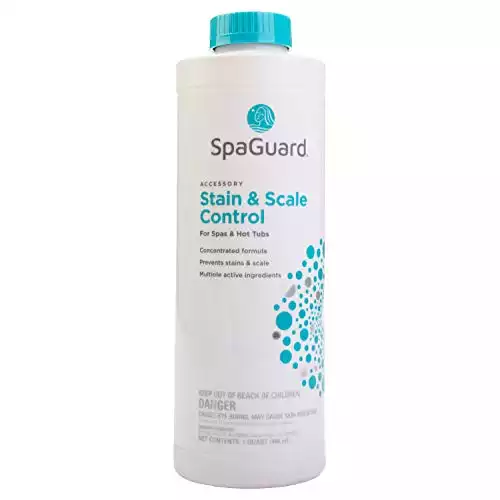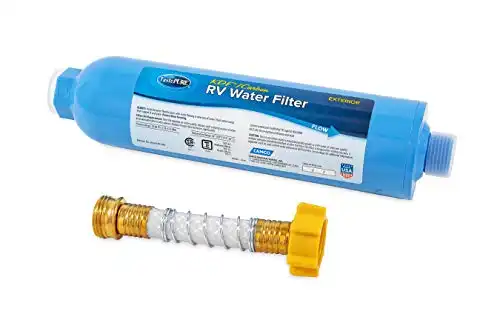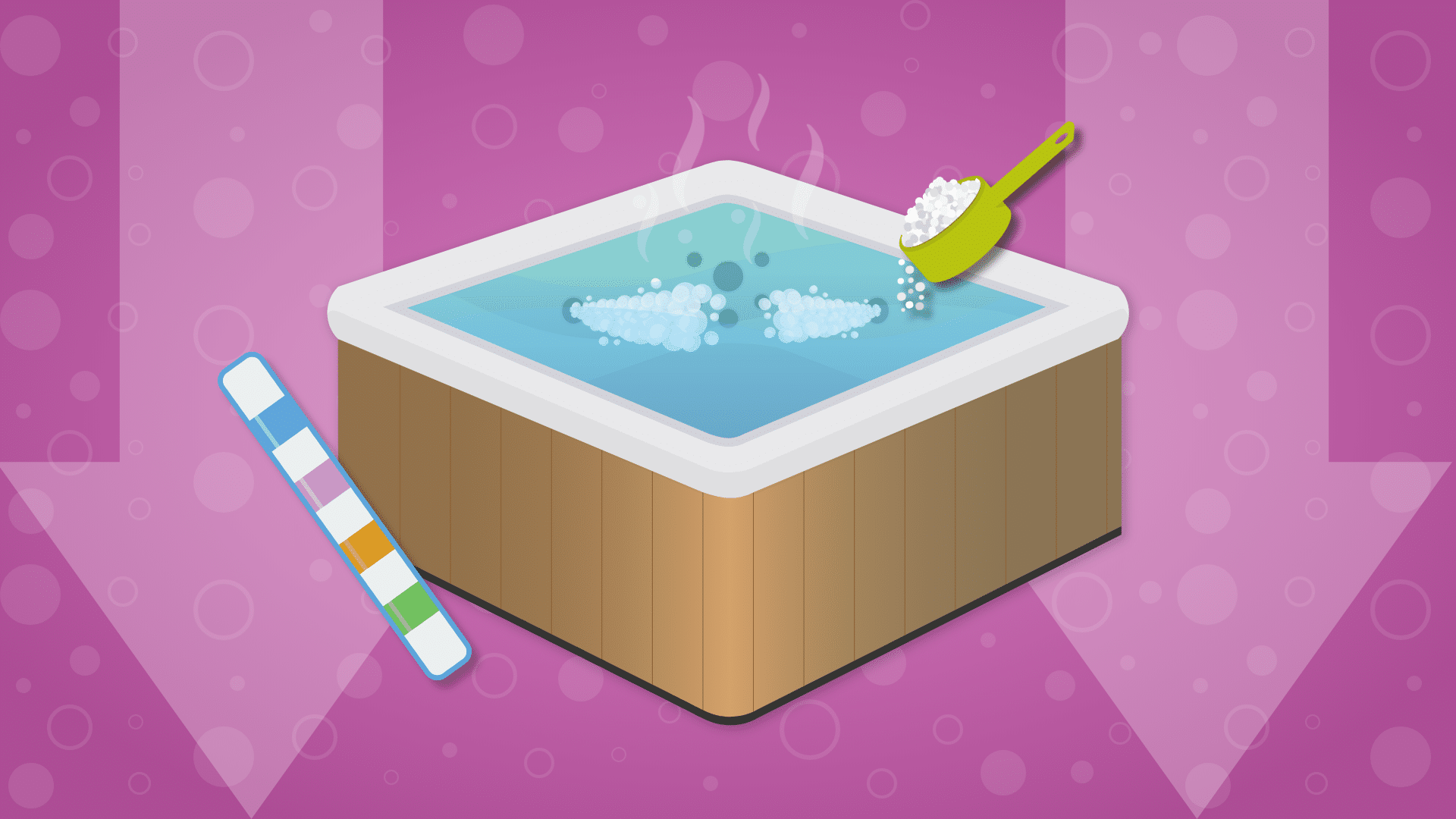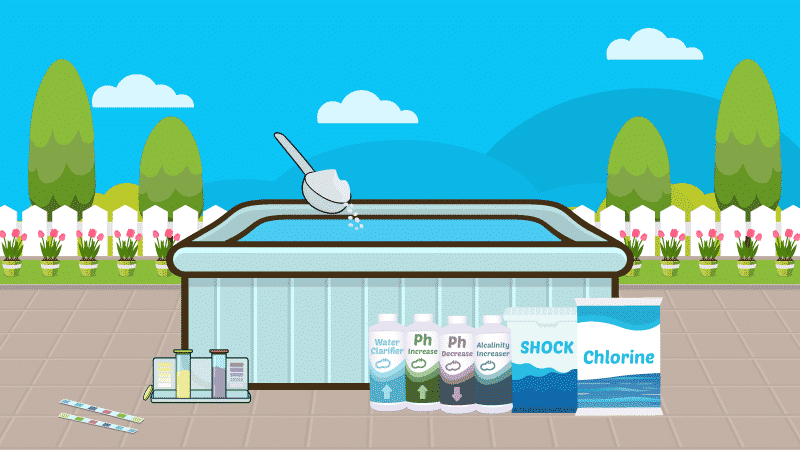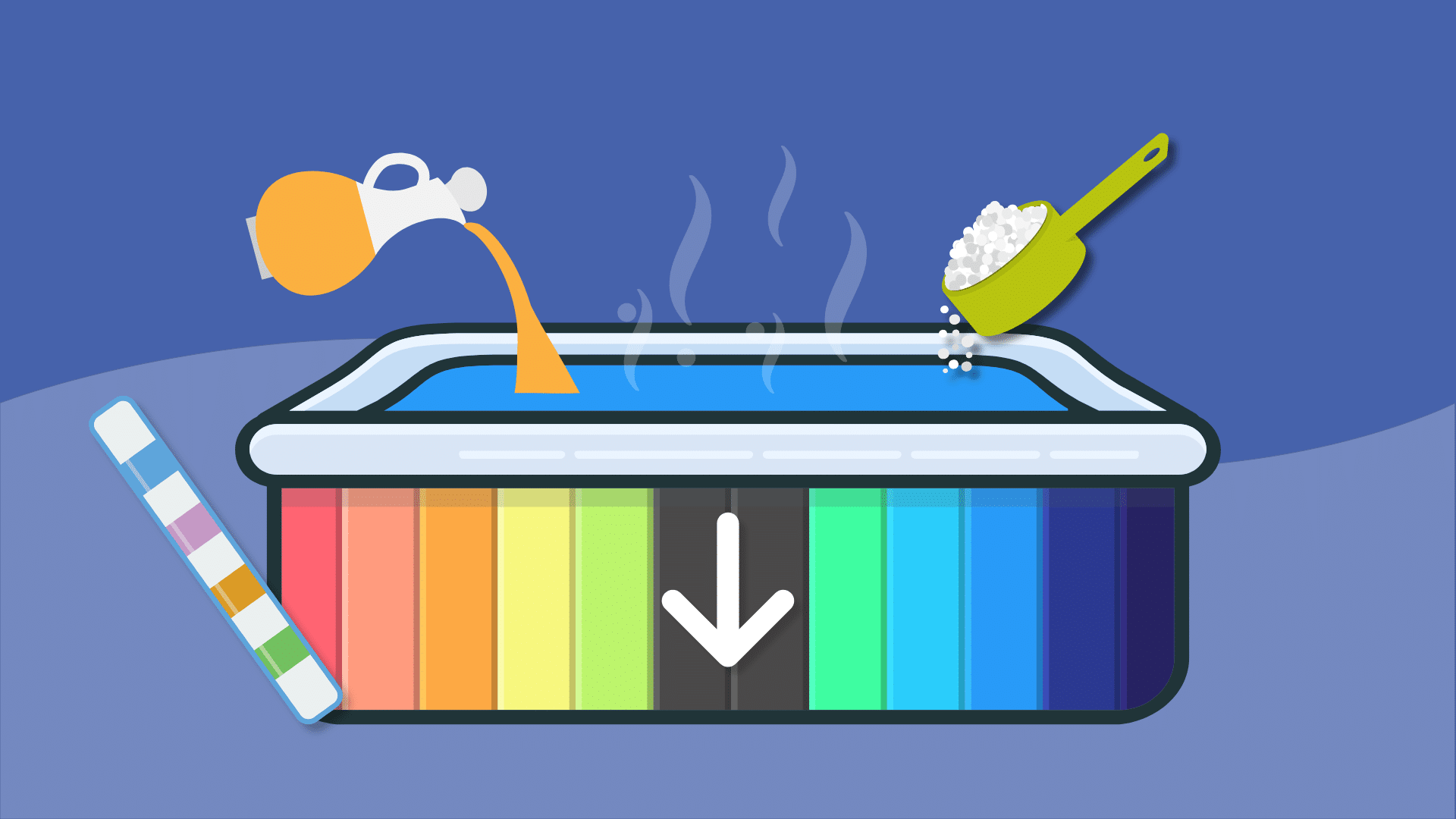How to Adjust Calcium Hardness in a Hot Tub
Is calcium hardness in a hot tub (or swim spa) necessary? It helps balance the water chemistry along with pH and Total Alkalinity. Balancing the spa water helps your sanitizer (chlorine or bromine) to be more effective in keeping it clear and safe to soak in.
The ideal calcium hardness level for a hot tub is 150 ppm (parts per million). The ideal range is 150-250 ppm. You can raise calcium hardness with a Calcium Hardness Increaser (a.k.a calcium chloride). And you can lower your hardness level by diluting your hot tub water. But it doesn’t have to be tested and adjusted every week. I only test hardness levels once a month.
This product effectively safeguards your equipment from corrosion and etching by maintaining optimal calcium hardness levels, ensuring long-lasting protection and durability.
In this article, I’ll explain the importance of calcium hardness, how to test for it, and how to raise or lower the level.
My fool-proof system for keeping any hot tub clean and clear at all times. Our course covers every type of hot tub, including portable spas, inflatable hot tubs, inground hot tubs, swim spas, and more. This is the LAST and ONLY hot tub guide you'll need.
What is Calcium Hardness?
It’s all about whether your hot tub water is hard or soft. Think of it as part of the water balancing trio, alongside your pH level and Total Alkalinity.
Your tap water contains a base level of hardness. But every location has a different level. So, it’s important to test your levels right after you fill your hot tub (or refill it).
If the calcium hardness level is low, it can cause corrosion and foam in your hot tub. If it’s high, it can cause skin irritation and cloudy water. It also causes scale buildup (like you sometimes see on shower heads in areas with hard water) in the form of calcium deposits (calcium carbonate).
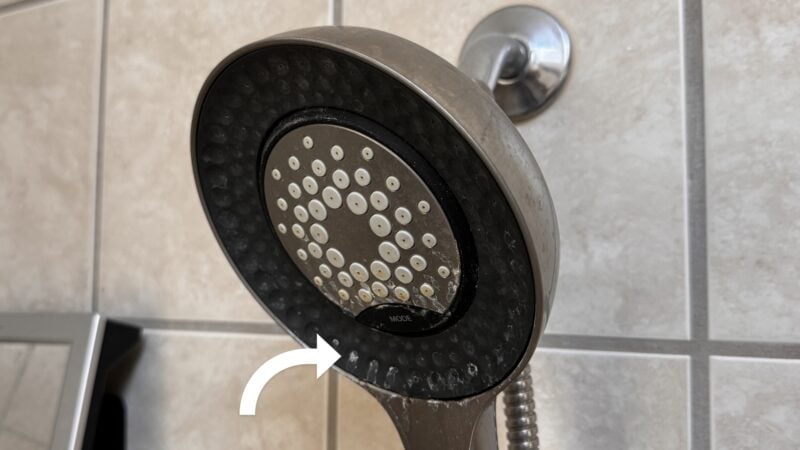
But before adjusting your hot tub’s calcium hardness, start by sorting out your Total Alkalinity and pH. Then, tackle calcium hardness last. Aim for a sweet spot of 150-250 ppm (parts per million) for calcium hardness in your hot tub. And again, you only have to do this monthly.
High Calcium Hardness in a Hot Tub?
If you live in an area with hard water, you’re already familiar with scaling. You see it on your shower head, your faucets, your dishwasher; anywhere you use water in your home. If calcium levels get too high in your spa, you’ll end up with hot tub scale.
You’ll be able to see some of it on the jets, in the filter, and even some nooks and crannies in the shell. But what’s more dangerous is the scaling you don’t see.
Buildup on the pump’s impeller can cause it to seize up, and replacing the pump can be pricey. Worse yet, scaling inside your spa’s pipes can impede water flow.
Also, too-high calcium levels can wreak havoc with pH and alkalinity levels, throwing your entire hot tub chemistry out of whack.
Finally, high calcium levels can cause white flakes in your hot tub or a cloudy hot tub. Again, you’ll have more trouble to get out of than just an incorrect calcium level.
Low Calcium Hardness in a Hot Tub?
If you let calcium levels get too low, you run the risk of equipment corrosion. This includes the jets, the heater’s heating element, and even parts of the shell itself.
Too-soft water can also result in hot tub foam, which means you’ll have two problems to fix. This can happen if you have a water softener in your hot tub that you use to fill your hot tub.
The Right Amount of Calcium in a Hot Tub
I recommend a range between 150 parts per million (ppm) and 250 ppm. This number also applies to total hardness. As long as you’re in that range, you’re fine. But before you start adding hot tub chemicals or draining your spa, you need to find out your current hardness level.
How to Test for Calcium Hardness in a Hot Tub
You have three options for testing the water in your hot tub, Jacuzzi, or swim spa:
- Test Strips: This is the quickest and easiest hot tub water testing method (and the one I recommend). Just make sure you use strips that include total hardness.
- Liquid Test Kit: A little nerdier and more labor-intensive than test strips, but sometimes more accurate. Again, ensure the kit tests for calcium or total hardness.
- Hot Tub Supply Store: Any store that sells hot tubs and spa supplies should be able to perform a water test for you. I recommend having the water professionally tested at least twice a year.
If you need more help, check out our guide on testing your hot tub water here.
What is Total Hardness?
The amount of both calcium and magnesium dissolved in the water is called total hardness. Why is this important? Well, some water test strips and kits only measure total hardness and not calcium hardness alone. This isn’t really that big a deal. If you really want to, you could do a bunch of math to determine exactly how much calcium and magnesium make up your hot tub water’s total hardness. But the truth is, you don’t need to. It’s enough to go by the total hardness to adjust calcium levels.
How to Raise Calcium Hardness in a Hot Tub
Did you find the water in your spa is too soft? You need to raise the calcium level before your equipment begins to corrode. Fortunately, the easiest way to increase calcium hardness in a hot tub is to—you guessed it—add calcium to the water.
This product effectively safeguards your equipment from corrosion and etching by maintaining optimal calcium hardness levels, ensuring long-lasting protection and durability.
Actually, you want to add calcium chloride, which is the active ingredient in calcium hardness increaser made specifically for hot tubs. Follow the manufacturer’s instructions to get the calcium level up where it needs to be. You can also follow our chart below.
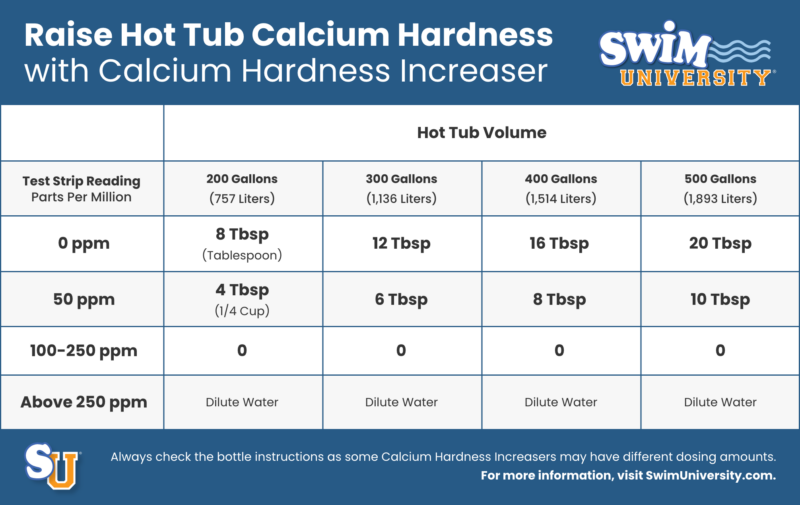
A Warning About Adding Calcium Hardness Increaser to Water
The main ingredient in Calcium Hardness Increaser is calcium chloride. When it mixes with water, it creates heat (it gets hot). Which is why it’s also used to melt snow and ice. So DO NOT pre-mix with water before adding to the hot tub. Just sprinkle it directly over the hot tub water. This act is called “broadcasting.” The hot water will help it dissolve.
If there’s any still lying on the hot tub floor, use a brush or skimmer to kick it back up into solution. DO NOT use your bare hands to do this.
How to Lower Calcium Hardness in a Hot Tub
Did the test show a calcium level above 250 ppm? Yikes. Time to take action before you start to see any scaling.
If it’s just a little above the high end of the range (near 250 ppm), drain some of the water from your hot tub, add fresh water, and then add a scale control product to keep the calcium level where it should be. You can add scale control weekly, if necessary, but always follow the manufacturer’s instructions for use.
Build-up of scale or calcium carbonate can potentially harm both the surface of your spa and its circulation system. The product in question effectively prevents scale by releasing potent compounds that adhere to calcium ions in your spa water, which are often the cause of such issues.
If the calcium level is way above 250 ppm, your best bet is to drain the hot tub entirely and clean it. When you refill it, use a hose filter to keep at least some of the minerals out of the water. Then, use a scale control product to help keep things balanced.
Fill your pool or hot tub with this hose filter that'll filter your water so you can have a fresh start with water chemistry.
If you need more help, we have guides on both draining a hot tub and cleaning your hot tub. Do high pH and alkalinity, too? You can also follow our guides on lowering your hot tub’s alkalinity and lowering pH in a hot tub.
Frequently Asked Questions About Calcium Hardness in a Hot Tub
I sent an email to over 20,000 hot tub owners asking if they had any questions about calcium hardness. They responded, and I answered.
Why is there calcium in your hot tub?
Calcium is in your source water. Depending on where you live, your water might be hard (high in calcium) or soft (low in calcium). If you have too much calcium, you’re looking at scale buildup; if you have too little, your hot tub’s components could start to corrode.
How can I test the calcium hardness level in my hot tub?
You can use test strips (recommended) or a liquid test kit. Dip the strip in the water, compare the color to the chart on the bottle, and you’ve got your number. Aim to do this monthly.
Why is water hardness in a hot tub important?
If your hot tub water hardness is too hard, you get scale buildup that can clog your pipes and jets. Too soft, and your hot tub’s parts can start to corrode. Keeping the calcium hardness balanced between 150-250 ppm protects your hot tub and keeps the water feeling nice on your skin.
How do I know if my hot tub has low calcium?
Use test strips or a liquid test kit to measure the calcium hardness. If it’s below 100 ppm, you’re in the low zone. You might also notice the water feels a bit slippery, and your hot tub components could start showing signs of corrosion or foaming.
The main thing to remember is that a high or low level of calcium in a hot tub is easy to correct. Just make sure you keep up with water care and you won’t have to worry about scale, foam, or cloudiness ruining your soak.
3 More Ways We Can Help With Your Hot Tub
- Hot Tub Cheat Sheets (Free): Easy-to-use guides to help you keep your hot tub water balanced and sanitized.
- The Hot Tub Handbook: An illustrated guide to DIY hot tub care, including water chemistry, maintenance, troubleshooting, and more.
- The Hot Tub Care Course. You’ll get step-by-step videos and a step-by-step downloadable guide with everything you need to know about hot tub maintenance.

